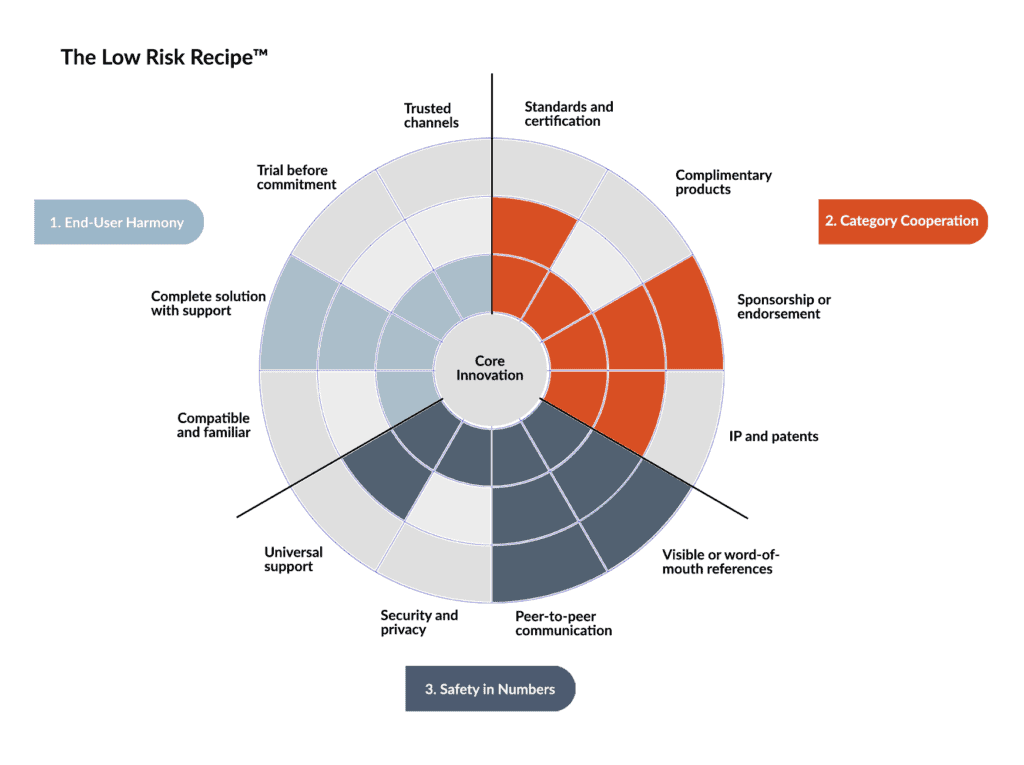Hint: It’s not by adding new features
Many people believe that breakthrough innovations are automatically accepted and widely adopted throughout society. But that assumption is flawed. Whereas the systems for enabling, formalizing and managing the innovation process seem to be improving, the fact remains that more than 90% of all new products and innovations fail, even if they provide obvious advantages. The good news is the adoption of innovations and technologies [that are truly meaningful] can be systematically accelerated using a framework of risk reduction that is based on the principles of neuroscience.
Without us knowing it, our amygdala – the “threat detector” and one of the oldest and more primitive parts of the brain – is constantly scanning our environment to assess our level of safety and alert us to any signs of trouble. It’s a basic survival mechanism with the goal of protecting us and keeping us safe. It was especially useful in prehistoric times when the threat of physical danger was omnipresent. But the amygdala can bypass the prefrontal cortex (the more newly-evolved part of our brain) and rapidly alert the body to danger.
Subconsciously, we see innovation as noxious and disruptive, and this bias can potentially discourage us from adopting a new product or trying an innovative new method. The reasons for this implicit bias against innovation can be traced to the fundamentally disruptive nature of novel and original creations. Innovation means change, without the certainty of desirable results.
People have an implicit belief the status quo is safe. And anyone invested in the status quo has plenty of incentive not to change. For example, novel ideas have almost no upside for a middle manager. The goal of middle managers is to meet the metrics of an existing paradigm.
The key finding of this study is that risk (or lack of safety) is in the eyes of the beholder. What might be perceived as high risk to some people is seen as low risk to others. And the greatest ambiguity comes from our discovery that an individual’s perception of risk can vary widely from one innovation to another.
In other words, a person can be the first on her block to buy an electric car, and at the same time the last to accept a COVID vaccination. Within the same person, EVs can be perceived as low risk and vaccinations can be perceived as high risk, and there is no method for predicting how someone will evaluate an innovation. The perception of risk is “innovation-specific.”




 End-User Harmony: Our analysis of 50 breakthrough innovations that have become mainstream products all have attributes that reduce perceived risk by demonstrating the vendor has domain expertise in the customer’s industry and understands their current problems and priorities. This proof of expertise is established by offering pre-engineered solutions that are compatible with the customer’s existing infrastructure. The solutions provided are sold or delivered through familiar channels, and augmented with consulting services and/or support at every stage of engagement.
End-User Harmony: Our analysis of 50 breakthrough innovations that have become mainstream products all have attributes that reduce perceived risk by demonstrating the vendor has domain expertise in the customer’s industry and understands their current problems and priorities. This proof of expertise is established by offering pre-engineered solutions that are compatible with the customer’s existing infrastructure. The solutions provided are sold or delivered through familiar channels, and augmented with consulting services and/or support at every stage of engagement.